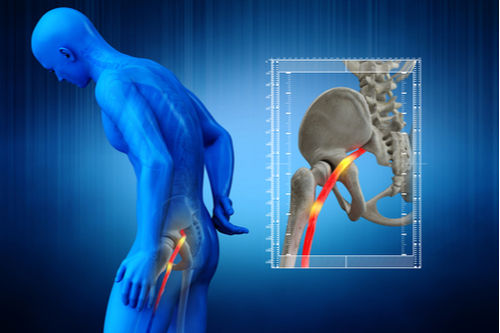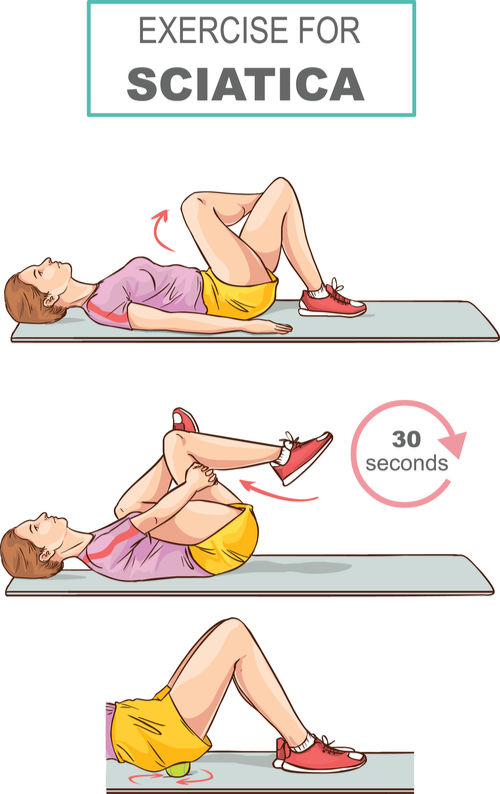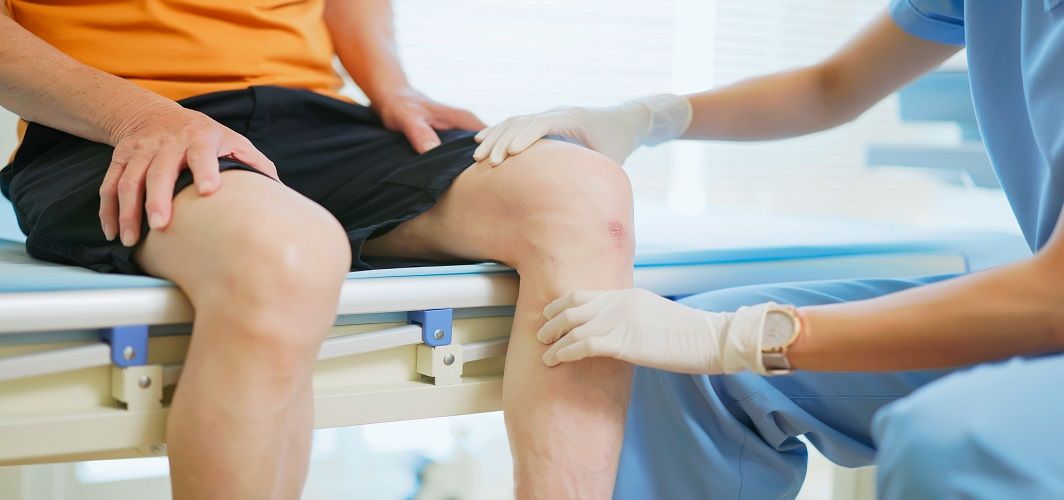Orthopedic Conditions
Don’t Ignore Your Back Pain! It Can Be Sciatica
4 min read
By Apollo 24|7, Published on - 27 April 2022, Updated on - 28 August 2023
Share this article
0
7 likes

Keeping yourself glued to the chair for extended hours or sleeping on an uncomfortable mattress - are some of the common reasons that may end up giving you a nagging pain in the back once in a while. Though this pain is brief and subsides by making some lifestyle changes, recurring or severe back pain could be an indication of something more serious such as sciatica. The article explores the difference between sciatica and back pain in detail below.
What Is Sciatica?
The sciatic nerve is the human body’s longest and thickest nerve that regulates various muscles and sensations in the lower legs. Sciatica is a term used to describe the pain that occurs when this sciatic nerve is injured or irritated. The pain associated with sciatica can range from moderate to severe and is usually felt in the lower back, hips, and legs.

Contrary to popular perception, sciatica is not a condition but a symptom of another problem affecting the sciatic nerve, such as a herniated (slipped) disk or spinal stenosis (narrowing of the spine) that could be compressing the nerve and causing pain. In most cases, sciatica affects only one side of the body. According to experts, 10 to 40% of people may experience sciatica pain at least once in their lifetime.
Symptoms of Sciatica
A shooting pain that radiates along the path of the sciatic nerve from the lower back via the buttocks into the lower legs is the characteristic symptom of sciatica. Some of the other common symptoms of sciatica are:
- Numbness and muscle weakness in the affected leg
- Worsening pain with coughing, prolonged sitting, and movement
- Tingling (sensation of pins and needles) in the feet or toes
Who Is at Risk of Sciatica?
Factors that can significantly increase the risk of sciatica are:
- Old age
- Being overweight or obese
- Occupational hazards
- Prolonged sitting
- Nerve damage from diabetes
How to Tell If the Back Pain Is Related to Sciatica or Not?
Some of the key differences between sciatica and general back pain are:
- Back pain can occur due to an endless range of conditions including muscle strain, arthritis, osteoporosis, etc. On the other hand, sciatica refers to a specific type of shooting pain that is caused by irritation or injury to the sciatic nerve.
- Back pain is mostly confined to the back. However, the pain associated with sciatica can be felt in the buttocks, hips, lower legs, and feet as well.
- In many instances, regular back pain resolves on its own without requiring treatment. On the other hand, sciatica usually takes longer to resolve and often requires medical assistance.
How to Prevent Sciatica?
While it is not possible to completely eliminate the risk of sciatica, we can definitely exercise some measures that can help reduce the risk. These are:
- Exercise: Focus on exercises that help maintain the flexibility of the spinal cord and strengthen the core (muscles of the abdomen and lower back). A strong core can support the spine and reduce the risk of sciatica.

- Maintain a healthy weight: Extra body weight exerts pressure on the joints and causes inflammation, thereby increasing the risk of sciatica.
- Quit smoking: Cigarettes contain nicotine, a substance that restricts blood supply to the bones and weakens the spinal cord and the vertebrates. This results in further stress on the spine and increased risk of sciatica.
- Maintain a balanced posture: A good posture while sitting can play a key role in preventing sciatica. For this, you can support your spine by using a chair with excellent lumbar support and an armrest.
Does Physiotherapy Help in Treating Sciatica?
As per Ms Ramsha Rehman, a physiotherapist associated with Apollo 24|7, “Physiotherapy treatment has been shown to help with pain from sciatica by reducing inflammation and relieving muscle tension. Physiotherapy treatment consists of non-invasive techniques such as manual therapy, dry needling, gentle nerve stretching, and spinal mobility work to relieve muscle tension, reduce the sensitivity of the irritated nerve and promote healing.”
Ms Rehman further states, “Physiotherapists advise and educate on positioning, posturing and the level of activity suitable for you. They also give you advice on how to gradually build back up to the activity level you want in a safe and non-detrimental way.”
Conclusion
Due to the lack of awareness about the condition, sciatica is often mistaken for regular back pain. While most people recover completely from sciatica, often without any medical intervention, it can damage the affected nerve permanently. Those experiencing persistent, recurring pain in the back should consult a physician for a more accurate diagnosis.
For more information, Consult Ms Ramsha Rehman
Orthopedic Conditions
Leave Comment
Recommended for you

Orthopedic Conditions
Sharp pain in the heel? These could be the reasons!
Heel pain can occur due to stress or injury. However, it can be treated easily with the help of medical appliances, comfortable footwear, physical therapy, and medication.

Orthopedic Conditions
Watch out for These Early Signs of Arthritis
Pain, stiffness, and discomfort in the joints may indicate arthritis. Early signs of arthritis may be overlooked and mistaken for an injury or strain.

Orthopedic Conditions
Delay Ageing of Your Knees with These Expert Tips by Apollo’s Orthopaedician
Pain in the knee is one of the most common orthopaedic issues experienced by people as they age. Know what causes the knees to age faster and result in pain.
Subscribe
Sign up for our free Health Library Daily Newsletter
Get doctor-approved health tips, news, and more.
Visual Stories

10 Foods That Are Unhealthy for Your Bones
Tap to continue exploring
Recommended for you

Orthopedic Conditions
Sharp pain in the heel? These could be the reasons!
Heel pain can occur due to stress or injury. However, it can be treated easily with the help of medical appliances, comfortable footwear, physical therapy, and medication.

Orthopedic Conditions
Watch out for These Early Signs of Arthritis
Pain, stiffness, and discomfort in the joints may indicate arthritis. Early signs of arthritis may be overlooked and mistaken for an injury or strain.

Orthopedic Conditions
Delay Ageing of Your Knees with These Expert Tips by Apollo’s Orthopaedician
Pain in the knee is one of the most common orthopaedic issues experienced by people as they age. Know what causes the knees to age faster and result in pain.